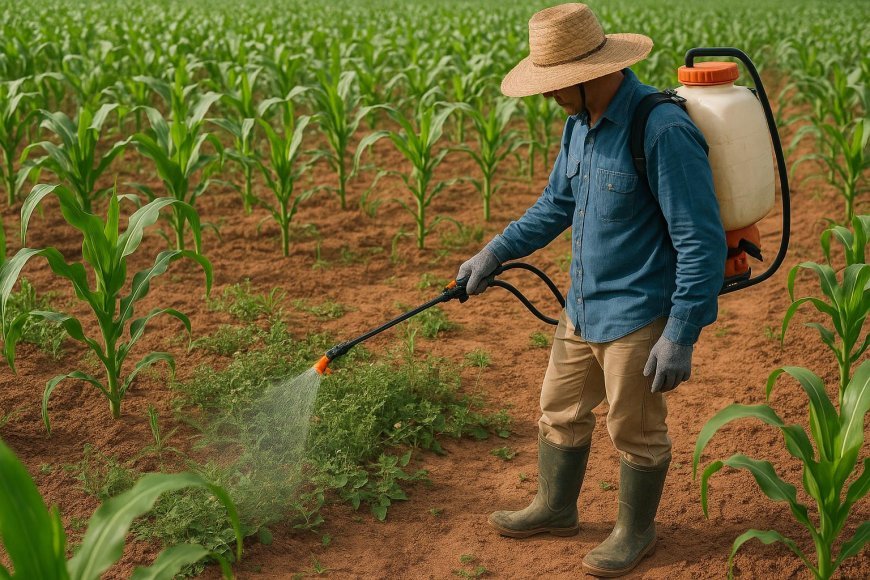From Application to Results: A Step-by-Step Framework for Tetraniliprole Use

Tetraniliprole 200 SC is a systemic insecticide from the anthranilic diamide class, known for activating ryanodine receptors in pests. This mode disrupts muscle contraction, leading to feeding cessation and ultimately death. For farmers, practical use is not just about applying it, but about aligning the right crop stage, pest pressure, weather conditions, and spray techniques to maximize outcomes. The following framework walks through each phase — from preparation to field-level impact — to help growers use Tetraniliprole with precision.
Tetraniliprole’s Strengths and Limitations
Tetraniliprole is effective against chewing and mining insects, including Spodoptera, Helicoverpa, and Tuta absoluta. Its translaminar and root systemicity allow deep tissue protection. However, it is not contact-based and shows minimal knockdown effect on adult pests. Timing and ingestion are key.
-
Effective primarily at early larval stages
-
Residual activity spans 10–14 days under normal field conditions
The framework below is divided into six actionable stages that align with agronomic decision-making.
Step 1: Assess Pest Pressure and Crop Sensitivity
Application decisions start with understanding the pest spectrum. Tetraniliprole is optimal in fields where chewing pests dominate. Scouting helps determine pest stage and density.
Key factors to check:
-
Pest stage: ideal when most larvae are early instars
-
Threshold level: only spray when economic threshold is crossed
-
Weather outlook: no rainfall within 6 hours post-application
For example, maize under attack by Spodoptera frugiperda benefits most when sprayed before tasseling, while tomatoes should be treated pre-fruit set for effective control of Tuta absoluta.
Step 2: Prepare the Application Mix and Equipment
Proper dilution and sprayer calibration prevent under-dosing and waste. Tetraniliprole 200 SC is usually applied at 30–50 ml per 15-liter knapsack, depending on crop canopy and infestation level.
-
Use clean water with pH between 6–7
-
Stir the solution well to avoid layering or sedimentation
Make use of flat-fan nozzles to provide uniform coverage. Steer clear of drift when there is little wind and while applying in the morning or evening. Retention is enhanced when droplet size is kept between 200 and 300 microns in open-field circumstances with significant evaporation.
Purchase 200 SC of Vayego Tetraniliprole. Using insecticide at this point guarantees prompt action, particularly for large-acreage crops where re-infestation is frequent and there is a limited window for efficient control. This timing ensures that major economic harm is avoided before the pest life cycle is disrupted.
Step 3: Apply During Optimal Field Conditions
Field conditions significantly influence the effectiveness of systemic insecticides. Tetraniliprole performs best when applied to actively growing tissue and in moderate humidity.
Spray during low light hours (6:30 AM – 9:30 AM or 4:00 PM – 6:30 PM) for improved absorption and reduced photodegradation. On overcast days, spraying can be extended by a slight amount.
Application should be uniform across all leaf surfaces. In crops with denser canopies like cotton or tea, ensure penetration through the lower foliage. Avoid overlap that causes phytotoxicity.
Step 4: Track Post-Application Efficacy Metrics
Once sprayed, observe feeding behavior and pest mortality. Tetraniliprole acts within 2–4 hours, with visible pest immobility by 24 hours and mortality between 48–72 hours.
Indicators of efficacy include:
-
Reduced feeding holes and leaf distortion
-
Pest immobility at larval stage
-
No new signs of infestation after 3 days
In soybean fields, a 73% drop in larval population was recorded within 3 days after spraying. Use sweep nets or direct counts to measure pest reduction.
"In agriculture, control isn't about killing everything. It's about timing the response so that damage never becomes irreversible."
Step 5: Integrate With Pest Management Plans
Tetraniliprole should be applied as part of an Integrated Pest Management (IPM) strategy to lessen resistance. Don't do it again during successive crop cycles. Alternate with other classes of insecticides (pyrethroids, neonicotinoids, etc.).
To postpone resistance, farmers can mix it with biological agents such as Trichogramma or Bacillus thuringiensis. It works well with multimodal pest control schemes, as it has a minimal effect on non-target insects.
Referencing the Insecticide Resistance Action Committee (IRAC) guidelines can help structure a season-long resistance management plan specific to crop and region.
Step 6: Document Outcomes for Continuous Improvement
The final step in the framework is documentation. Monitoring outcomes helps identify what worked and under what conditions. Data points to record:
-
Pest count before and after spraying
-
Weather data during application
-
Time between spraying and rainfall
-
Any visible phytotoxicity
This can help in conversations with agronomists and calibrate future spraying decisions. Farms with thorough usage logs demonstrate 18–22% more effective pest management over time than those that only use observation.
Spray log integration enhances traceability and compliance for farmers utilising GIS-based crop mapping, particularly for export markets.
Common Field Mistakes and How to Avoid Them
Even with the right insecticide, missteps in the field reduce effectiveness. These are common errors:
-
Spraying too late in the pest cycle
-
Using hard water (high calcium/magnesium) that reduces uptake
-
Tank-mixing with high-pH substances like lime or borax
-
Reapplying before interval completion, causing phytotoxicity
Observe label and regional extension recommendations at all times. Agronomists can help adjust tank mixes in areas with varying insect pressures without sacrificing effectiveness.
Field Case Examples From Different Crops
-
Tomato fields in southern Turkey: Use of Tetraniliprole pre-flowering reduced fruit damage by 81% compared to untreated.
-
Cotton in Gujarat: Sprays at 30-day intervals provided continuous control of Spodoptera litura with a 92% reduction in leaf feeding.
-
Tea gardens in Assam: Residue monitoring showed 0.018 mg/kg at 7 days post-application, within safe export limits.
These real-world trials reinforce the need to align application timing with pest lifecycle for best results. You can explore similar case studies compiled by FAO’s pesticide data portal.
FAQs on Tetraniliprole Application
-
How long does Tetraniliprole remain active after spraying?
It protects 10 to 14 days under field conditions, depending on crop canopy and rainfall. -
Can I mix Tetraniliprole with other insecticides?
Yes, but avoid mixing with alkaline substances. Always conduct a jar test before tank mixing. -
What is the safe interval between spraying and harvest?
Pre-harvest interval (PHI) varies by crop. For leafy vegetables, it is typically 7 days; for fruits, 14 days. -
Is it effective on adult pests?
No. It primarily targets larvae through ingestion. Adult pests are largely unaffected. -
What is the ideal crop stage to apply Tetraniliprole?
Apply during early vegetative or pre-fruit set stages when larvae are small and active.
Pro Tips for Maximizing Efficiency
-
Rotate with other IRAC groups every season to avoid resistance buildup.
-
Store the product at 5–25°C to maintain formulation integrity.
-
Use anti-drift agents if spraying in windy conditions.
Precision is key. Each minor adjustment — whether in droplet size or application time — contributes to a larger yield outcome. Experienced farmers track this detail over seasons to optimize results.
Real-World Challenges and How to Overcome Them
Problems like product misuse and pest comeback are common for farmers. Data-driven decision-making is achieved by combining historical yield maps, pest lifecycle charts, and weather data. Predictive spraying, for instance, is made possible by mobile apps that monitor insect scouting reports, which cuts down on needless chemical use.
Repeated late treatments diminished Tetraniliprole's effectiveness in maize because of hardened larval stages. This trend was reversed in later seasons, nevertheless, by early intervention during vegetative growth.
What Comes After the Spray?
Spraying is the middle, not the end. Long-term field health is maintained by post-application monitoring and switching to compatible chemicals. Tetraniliprole provides a link between environmentally acceptable practices and aggressive insect management. When properly included, it benefits the entire agricultural environment, not just the season.
A "spray log culture," in which dates, results, and pest reactions are documented, is frequently established by high-performing farms. This technique transforms a general application into a calculated action.
Last Thought: From Methodology to Change
Tetraniliprole use involves more than just using an insecticide. It involves making a number of well-considered, sequential decisions on what to anticipate, how to spray, and when to scout. Every stage builds on the one before it, creating a system that improves productivity with fewer chemicals, greater precision, and increased resilience in addition to protecting crops.
What's Your Reaction?
































































